I’ve built this table from a PDF from a woodworking magazine. I’ve done my own take on the top. And, I’ve tapered all 4 sides of the legs. First I make the legs. They are 1-1/8 × 1-1/8". I’ll mortise everything before I taper. The table has 3 aprons of equal size. Each apron has 3/8″ × 3/8" tenons the full height of the apron. The legs get mortised for the aprons. The back legs get two mortises for the back and side aprons. The front legs get mortised for the side aprons only. The front bottom rail requires a 3/8″ × 3/4" mortise in the front legs also. The top rail is dovetailed. That’s done after the legs and side aprons are assembled and glued.
The tapered starting at 6" from the top to 5/8″ × 5/8" I have a jig that I use now to make the legs. 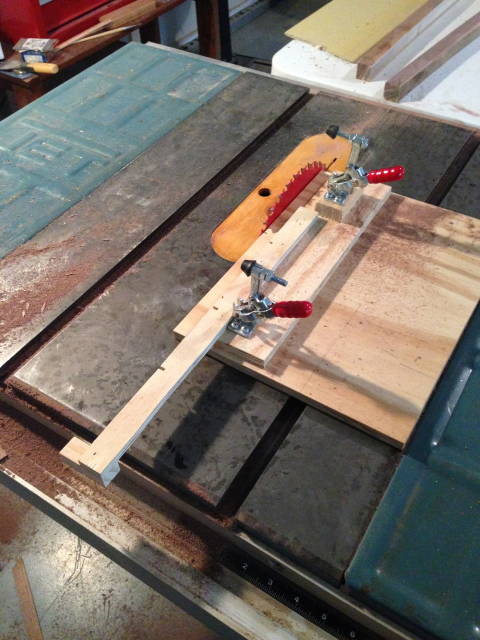 After the legs are tapered now the front and back legs can be glued to the side aprons. I used a #80 scraper plane and card scraper to finish everything prior to any glue-ups. Here is one of the leg-apron assemblies.
After the legs are tapered now the front and back legs can be glued to the side aprons. I used a #80 scraper plane and card scraper to finish everything prior to any glue-ups. Here is one of the leg-apron assemblies. 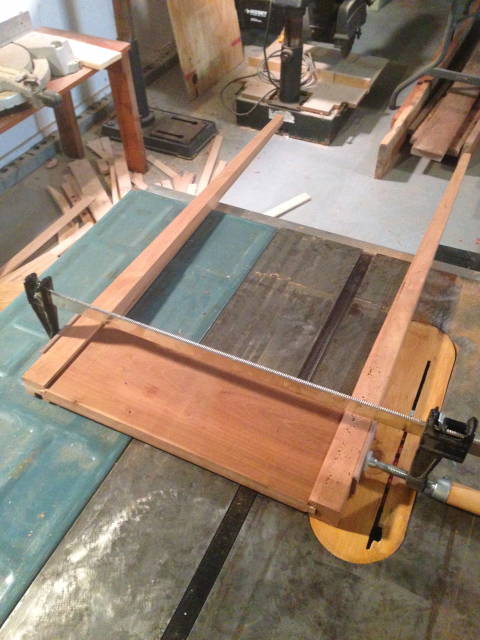
After the leg assemblies are dry, you’ll want to cut your dovetails for the top rail. 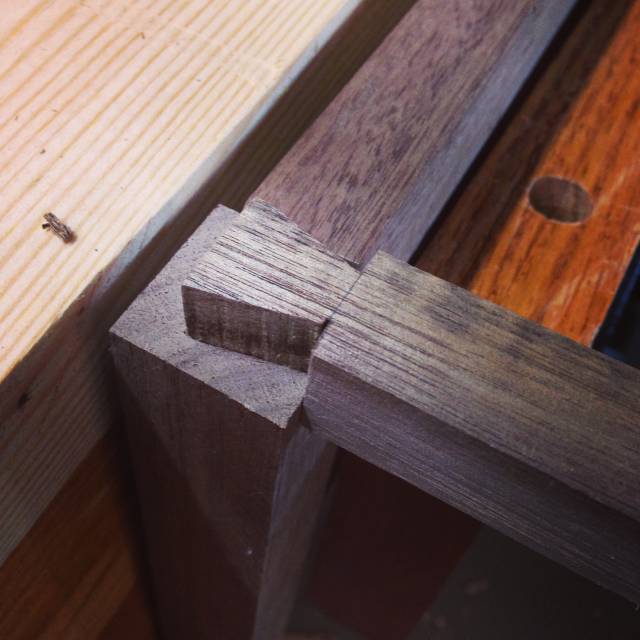
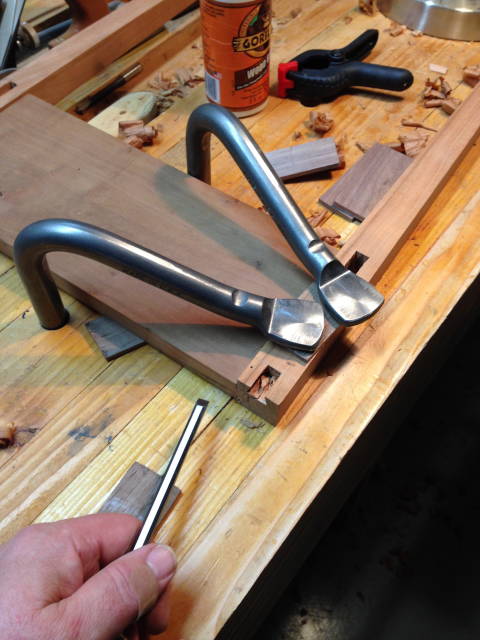
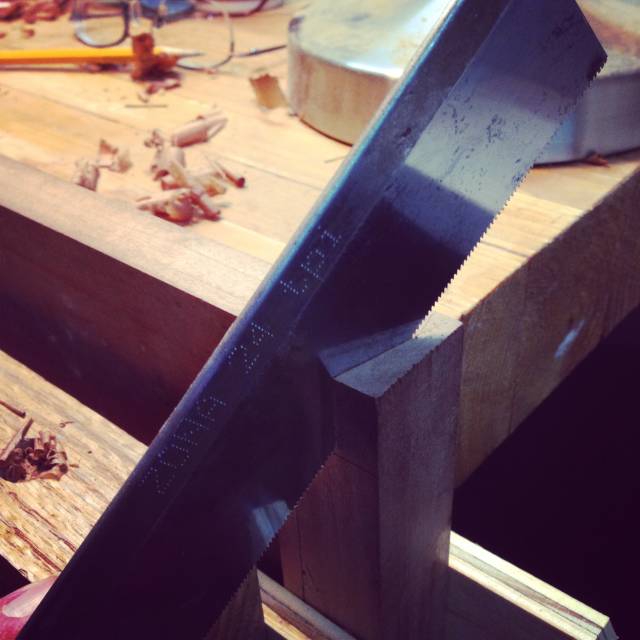
Since your mortises for the bottom rail are already cut, now you can glue up, 1) the top rail, 2) the bottom rail, and 3) the back apron. This will sturdy the table now. Please be sure to check everything for squareness. This is tricky here and so important. I have done 3 of these tables and I have a commission for one more in walnut. Every table has come out square. 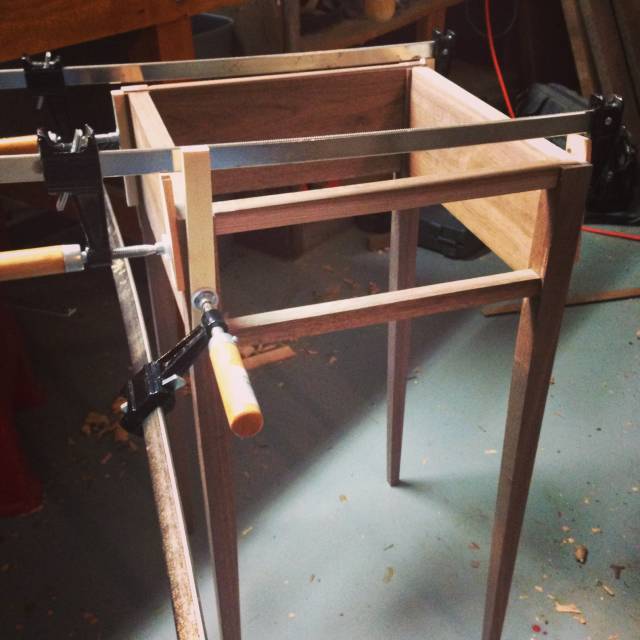
Once the table is dry, I’ve used a little block plane to clean up where the top will sit. I’ve also planed again after the drawer runners are glued in. Here’s a shot with the runners. 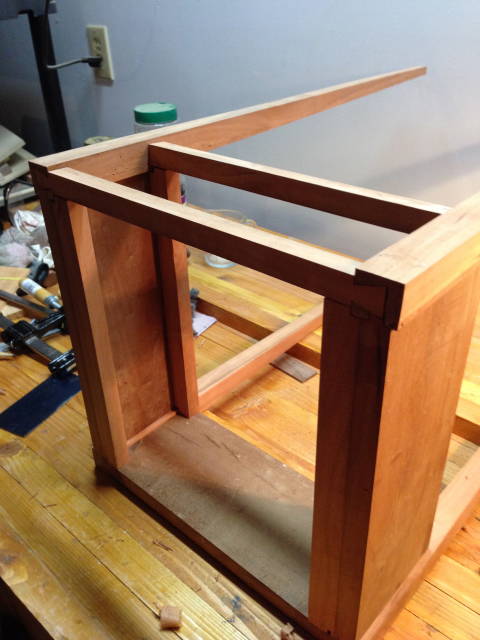 The drawer will fit between the front legs so you can see there’s the need for shims on the bottom runners and aprons to provide the same width between the front legs all the way through to the back of the table.
The drawer will fit between the front legs so you can see there’s the need for shims on the bottom runners and aprons to provide the same width between the front legs all the way through to the back of the table.
The top (18″ × 18″) can be made anyway you like. I’ve done a walnut table that’s solid with no breadboard ends. And, I’ve done a pine and a cherry top with breadboard ends. All tops get a little bevel in at 2" on the underside. This is tricky to do on the tablesaw and on this most recent cherry table I left the tool marks and saw chatter. It kind of added to the table. The cherry also had worm holes in it because it was from a tree that was on family property since the late 1600s. 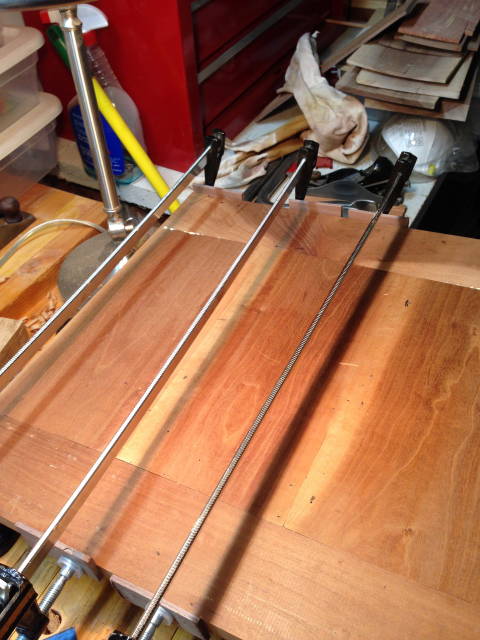
The drawers are fun. They have a half-blind dovetail on the front piece. The backs are just rabbet joints. The bottom of the drawer floats in a groove in the drawer front, sides, and back. The drawer material is sassafras. I got this beautiful material for $2.50 a board foot.
David L. Whitehurst









